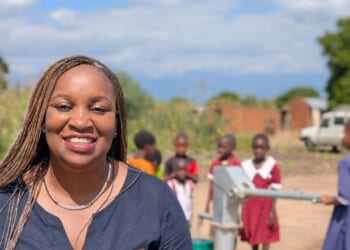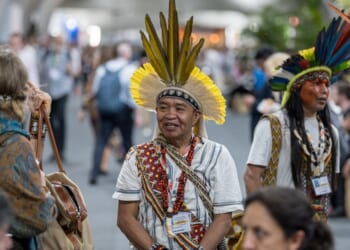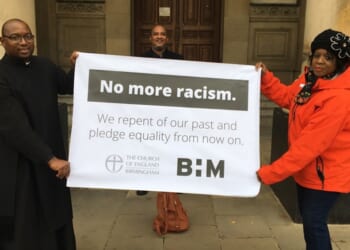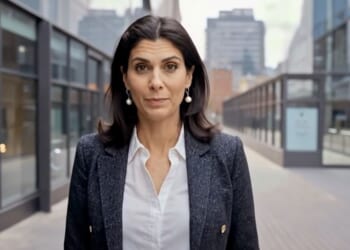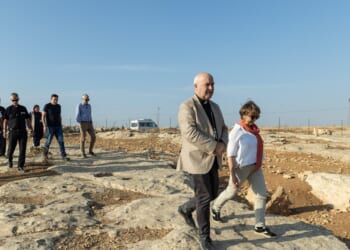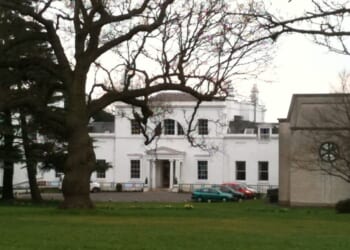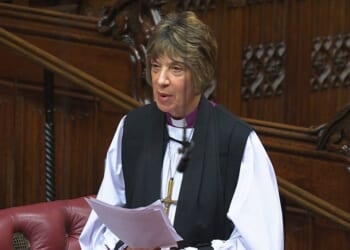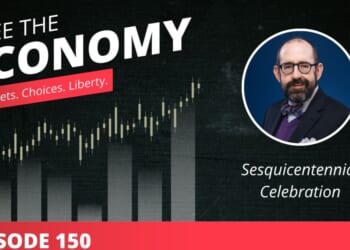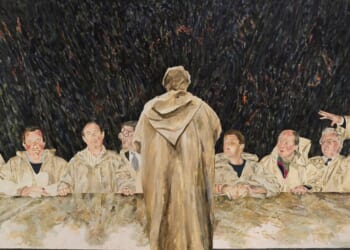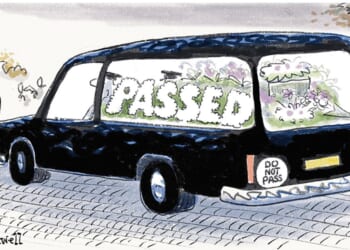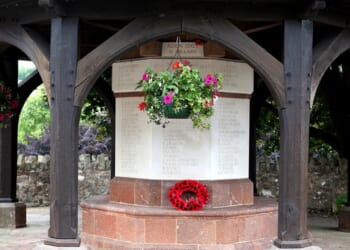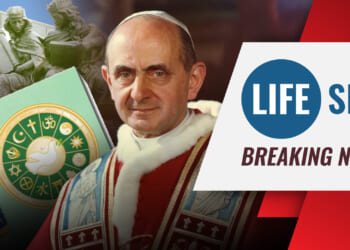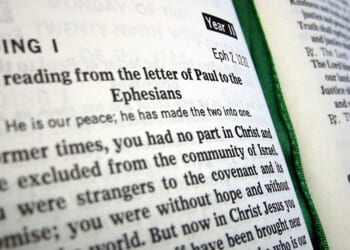THE Very Revd Winnie Varghese, installed last weekend as Dean of St John the Divine Cathedral, New York, the largest cathedral in the United States, is hopeful, despite the challenges ahead: both in the political context of the rise of Christian nationalism and the financial challenges facing every church, and St John’s more than most, given its size and running costs.
In an interview with the Church Times, she said that she was not fazed by the many firsts attached to her appointment (woman, woman of colour, and married to a woman). “I am those things, and in this Church I am still an anomaly: I remember the limits to my own imagination of what was possible in my life as a child, and, if it cracks open imagination for some children or young people, I’m glad. I hope to see the second, third, fourth, and fifth.”
The daughter of Indian immigrants, Dean Varghese spent part of her childhood in Kerala. She graduated from Union Theological Seminary and was ordained deacon in Los Angeles in 1999. She has served at Trinity, Wall Street, in New York, and also as Rector of St Luke’s, Atlanta, Georgia. She has also chaired the General Convention’s Committee on the State of the Church. Now 53, she is married with two grown-up children.
The news of her appointment had reached far beyond New York. Letters congratulating her had arrived from India, from women who had earned their degrees and fought to serve, she said. “Ironically, the privilege we’re asking for is the privilege of service. If I represent a possibility for that, I’m honoured.”
Yet, she said, being the first was rarely without cost. “I’ve been in places where my presence disturbs people,” she said. “Sometimes people have been really cruel — and, surprisingly, it’s not always those I’d expect.”
She spoke about the extra demands placed on women leaders, particularly in the Church. “Most of us are trained from the beginning not to be direct, not to appear angry. The challenge is to hold on to humility without confusing it with humiliation imposed by prejudice.”
Her new ministry is beginning amid turmoil in the US — mass shootings, political violence, threats to democracy — but she refused to despair. She described herself as “a liberationist, not a liberal”, and a “very traditional” believer.
“The orthodox idea is that the garden [of Eden] still exists, and we turn to it every time we pray. Our hope is that we cannot help but long for it, we know that God waits in the dew of the evening for us, that is the truth of our lives. It’s why we pray. We try to search for glimpses of it in the world around us. Our political reality, our social reality, our whiteness, our Christianness, our imperial religion, will never take us to it. But we individually know, and our movements know and in our deep solidarity with the suffering of the world, the point of that is the glimpse of the Kingdom.”
There were “eruptions of holy things” in daily life, she said, but hope and progress were not linear. Though she felt devastated by the political violence, she believed that the Church needed to assure people.
“God has not abandoned us. We are not mistaken to believe in the beauty of the world. The world is terrifying if we face it honestly, but it’s important that we face it honestly, because, if we are so tied to our own safety and protection as we can be, as colonial Britain, for example, there is a risk that we will keep all kinds of things at bay and call them evil, so that we can stay safe. And that is a tool of empire. And it’s happening in your country and in my country.”
The clergy at St John the Divine have long used its vast building as a platform for public witness, thought-provoking art (including the Christa sculpture of a female Christ by Edwina Sandys), and debate. In 1937, a replica of a slum tenement flat was installed in the cathedral so that worshippers would see what poverty was like. “That’s our legacy. The power of this place is to proclaim and frame imagination like no other religious building in this country,” the Dean said.
She wants the cathedral not only to stand beside the vulnerable in courts or detention centres, but to use its “bullhorn” — pulpit, art, and public witness — to proclaim what is true.
Its future existence depended on that witness, she explained: equipping people to imagine God’s dream for their lives and communities. “If we can’t do that,” she said, “we’re just too expensive to make sense. But if we do, what we need will come.”
She concluded: “I don’t feel afraid of this future. I feel very excited about it. There’s more space, more inclusion; there will be disruptive change, because, frankly, there are more people like me.”



